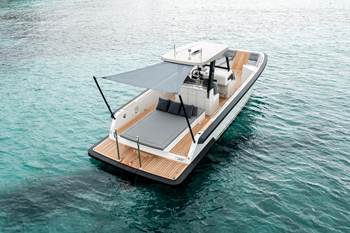Search Results
Showing 211 – 220 of 453 results
The wind energy market has long been considered the world’s largest market, by volume, for glass fiber-reinforced polymer (GFRP) composites — and increasingly, carbon fiber composites — as larger turbines and longer wind blades are developed, requiring higher performance, lighter weight materials. The outer skins of wind and tidal turbine blades generally comprise infused, GFRP laminates sandwiching foam core. Inside the blade, rib-like shear webs bonded to spar caps reinforce the structure. Spar caps are often made from GFRP or, as blade lengths lengthen, pultruded carbon fiber for additional strength.
The molded structural composite refrigerated trailer incorporates a more sustainable, zero-emissions solution with lower operation costs.
Claiming significantly higher power generation capacity than traditional blades, Xenecore aims to scale up its current monocoque, fan-shaped wind blades, made via compression molded carbon fiber/epoxy with I-beam ribs and microsphere structural foam.
The natural fiber is increasing traction across several marine applications, including in projects by Greenboats, Northern Light Composites, the Beneteau Group and others.
Materials will be characterized and performance modeled for wide array of aircraft and space applications.
Duty will fully assume his new role as CEO in April 2023, while continuing his position as an engineering professor at the University of Tennessee, Knoxville.
Online, international event taking place Nov. 15, 2022 is open to industry, presents six EU-awarded projects and their first results, among them CEM-WAVE for CMC.
Airbus and European suppliers prepare for production and assembly of the composites-intensive satellite to meet a 2025 delivery target date and 2026 launch.
Research funded at Purdue University, University of Texas at Arlington will produce a computer tool to exploit tailorable composites, hybrid material systems for a variety of broad applications.
Netherlands-based startup Kitepower’s Falcon airborne wind energy (AWE) system deploys a fiberglass-intensive kite to generate wind energy with a low ground footprint.
Glass and carbon fiber meet performance needs for custom-built tenders.










